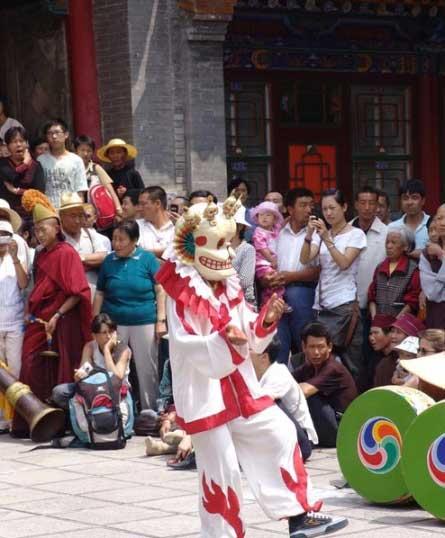
 |
| Mount Wutai (CNTV) |
In the glorious age of the Tang Dynasty, Mount Wutai's Buddhism developed to its second prosperous period. According to the "Legend of Ancient Qiliang," the mountain had over 300 temples and over 3,000 monks at that time, and Mount Wutai was not only a renowned Buddhist mountain but also a sacred Buddhist land in China, and was known as the head of China's Four Famous Buddhist Mountains.
It was in the Tang Dynasty when Mount Wutai started to become a sacred Buddhist land and had influence on the whole world's Buddhism. The Tang Dynasty was a key period in the development history of Mount Wutai's Buddhism
The glorious Tang Dynasty originated from Taiyuan, and therefore it regarded Mount Wutai as the "moral origin of the ancestors." When Li Yuan was raising troops to revolt against the Sui Dynasty, he made a wish in front of the Buddha: If he could become the emperor, he would greatly spread the Buddhist spirit. In the Wude second year (619 A.D.), Li gathered senior monks in the capital, and set 10 virtues to administrate Buddhist affairs. After the Emperor Taizong of the Tang Dynasty succeeded to the throne, he revived the cause of Buddhist scripture translations and appointed Prabhakaramitra to take charge. He also tonsured 3,000 monks and built many temples in the old battlefields. In the Zhenguan ninth year (635 A.D.), the Emperor Taizong gave an order, "Mount Wutai was the old residence of the Bodhisattva Manjusri and is a sacred place. It is close to Taiyuan and is the moral origin of our ancestors. Therefore, people must not commit blasphemy towards it." In that year, 10 temples were built in Mount Wutai and hundreds of new monks were tonsured.
【11】 【12】 【13】 【14】 【15】 【16】 【17】 【18】 【19】 【20】
【21】


















 Rainstorms flood more than 10,000 cars in underground garages in Wuhan
Rainstorms flood more than 10,000 cars in underground garages in Wuhan


![]()
